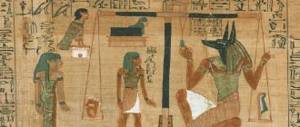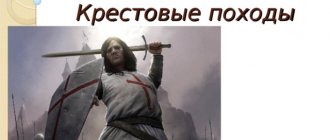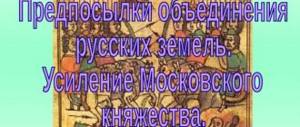Ready-made history homework
PRELIMINARY REMARKS
The manual presents two options for planning the course “The World in the Middle Ages”. The first option is designed for 52 hours. In the conditions of studying history according to the concentric structure of education, the first option involves an in-depth study of the material. This planning is also acceptable for teaching in a linear structure with material being taught in 16 lessons (52 and 16 - a total of 68 hours during the school year.)
The second planning option is designed to study the course within 28 hours, since out of 68 hours during the academic year, 40 hours are designed to study the course “Rus and Russia in the Middle Ages” (68 hours in total). The transition to a concentric structure of history education presented a number of new complex tasks for the teacher. The main thing is to achieve maximum results with a minimum of study time for studying a large volume of educational material. Teaching with large block topics based on supporting notes will help the teacher cope with this problem. At the same time, the second task is solved - time is freed up for studying cultural issues, the values of civilization in the Middle Ages in different countries and at different stages of development, mentality and relationships of people of the Middle Ages.
The presented educational and methodological material will also allow the teacher to work according to both the concentric and linear structure of historical education. The concentric structure includes the period from the 5th to 6th centuries. from R.H. until the 16th century Therefore, the material in the third part of the manual will be studied in grade 7. (“The World in New Times”). And according to the linear structure, the third part will complete the course on the history of the Middle Ages.
LEARNING WITH PASSION
This work is the result of many years of teaching experience using supporting notes in history lessons. The complexity of their development lay primarily in the fact that the presentation of specific events, dates, historical patterns and connections did not overshadow the “living” history, did not replace the reconstructed “getting used to” in the lives and destinies of people, in their inner world. History is primarily a moral and ethical subject, and its task is to educate through empathy the participants in the historical process who know how to analyze historical facts.
Historical teaching in school suffers primarily from fragmentation of material and events. Often, a student forgets what he has learned in previous lessons even before he knows what results the cause-and-effect relationship will lead to. This is how the idea arose to study historical material in blocks that would include integral topics. If the material of the entire topic is simply conveyed in several lessons through a story, lecture, conversation, then this confuses the student, and a “porridge” of many small subtopics forms in his head. But the same events and facts, arranged in a single visual chain, clearly understood by the student, and with the main key sub-questions and subtopics highlighted, lead to a new qualitative result. This is the essence of the supporting summary on one block topic. A holistic view of a historical event, a single chain: “cause - event - consequences”, highlighting key problems and events - this is perhaps the most important thing. But studying in blocks also involves solving the second important problem - a significant reduction in educational material in connection with the transition to compulsory nine-year education. There is time and opportunity to study additional material, to include portrait lessons, historical travel, and creative assignments in the learning process. And of course, it is important to change the knowledge testing system: this is not just checking individual paragraphs or points of a topic, but monitoring knowledge of entire topics, events, cause-and-effect relationships. The block theme is encrypted into a system of support signs. These are symbols, words, dates, arrows of transition or transformation, signs of alliance or opposition. However, most of the signs are unified. They allow us to identify and record common causes and trends in the history of various countries. The signs of the supporting summary (SC) are grouped into separate elements, a kind of “mini-blocks”. On average, each OK consists of 8-10 “mini-blocks” marked with numbers. The chain of signs ends with a conclusion on the topic or an assessment of the consequences of events.
Students quite quickly and easily learn what exactly stands behind this or that element of OK. The student’s uncomplicated, vivid imagination allows him to sense the historical pictures of the past behind the abstract signs. Students easily and completely remember the material of a voluminous topic, which sometimes includes several paragraphs of the textbook.
It is especially necessary to highlight the importance of OK for “weak” students. It is difficult for them to remember even a single fact, event, or date, not to mention a whole chain of topics. Such students become lost, withdrawn into themselves and ultimately lose minimal interest in learning. OK in this case becomes really a SUPPORT for him. OK allows you to recall and reproduce the material not only of an individual element, but also of the entire topic as a whole, without prompting from the teacher. Stiffness gradually disappears, interest in acquiring knowledge awakens.
As they work with OK, students reach a new level: they begin to compose OK on their own and often offer their own symbols and signs for individual subtopics. Such work is impossible without thoughtful study of educational material, without the ability to highlight the main thing in a text or a teacher’s story. In high school, this technique allows you to concisely record any lecture (here the student uses frequently repeated signs, abbreviations, drawings, etc. to record entire expressions or entire processes).
The supporting notes contain material for long-term memorization, key reasons and facts, dates, and key historical figures. At the same time, when revealing the content of the topic, it is always possible to include in the story additional material, historical sources, a map, a live story about the heroes of the events, paintings, illustrations. When studying a topic using OK, it is easy to capture students’ attention at the level of assimilation: “know”, “understand”, “imagine”. But it is impossible to master the material meaningfully without having a learning goal in mind. Therefore, it is important to always put PURPOSE at the core of learning in a lesson. Therefore, when studying a topic, the teacher must first of all clearly dictate it to the students for recording: “I must understand... (remember...).” Having thought about the purpose of the lesson, and having recorded it in writing, the student already consciously remembers the basic concepts, connections, and patterns. At the end of the lesson, summing up, it is imperative to once again pay attention to the recording of the goal and remind students what they have learned today. The student's feeling of satisfaction from the thought of completing a task is another incentive to learn. This is especially important for a “weak” student.
The study of the block topic follows the line of gradual deepening into the educational material. First, this is a brief development (disclosure) of the content of the material based on OK, then a detailed, detailed explanation, and on individual elements with an in-depth description and assessment of the individual, a live description of the details of the event, etc. In this way, the material is “got through” several times: in a compressed and expanded form, the degree of memorization and assimilation of the material increases sharply. The forms of work also involve independent reading using OK. Next, we move on to a new stage: consolidation and repetition of the material. In a regular lesson, reinforcement is very brief and sporadic. According to the method of block-thematic work, on the contrary, a long period of studying the material in a group or in pairs is required. Students once again briefly and comprehensively “go through” the topic material in OK. They repeat and reinforce concepts, patterns, the course of events, work using maps and documents, the text of the textbook and self-test sheets. And at the final stage - testing of knowledge using the tests presented in this development, practical work, self-test sheets and additional questions from numerous questionnaires, manuals, etc. A comprehensive test involves completing 4-6 types of tasks. The knowledge self-test sheet allows you to record a variety of levels of testing from a detailed answer to participation in group work. Student consultants can not only help “weak” students, but also receive the right to give grades for certain types of tests.
Training based on the method of supporting notes involves familiarization with its elements starting from the course “History of the Ancient World” and a gradual deepening of application in the courses of Russian history and “New History”. At the same time, it is desirable to use the OK of interconnected historical processes in different countries to create a holistic picture of events.
The reference summary is made by the teacher on a tape of Whatman paper 30-40 cm wide and 1.5-2 m long. The drawing of the reference summary is made with black and red ink and a poster pen.
OK for individual work of students are carried out on cards from whatman paper measuring 15 x 20 cm. Self-test sheets, practical tasks, etc. are also printed. Such a colossal amount of work will pay off with interest. It is not performed for each lesson, but for the topic as a whole. In total, this development includes 14 block topics and, accordingly, 14 supporting notes and 12 sets of test tasks.
Thus, material grouped into block topics, the student’s active participation in the creative process of cognition and, as a result, liberation and overcoming the student’s fear of “I don’t remember”, “I don’t know”, a clear understanding of the purpose of the lesson and a comprehensive test of knowledge on the entire topic is the key to solid, meaningful knowledge.
Block-thematic planning of the course “History of the Middle Ages” based on the methodology of supporting notes (First option - 52 hours)
Lesson 1. Introductory. A brief repetition and generalization of the values of the civilizations of the East and the ancient world. The Great Migration of Peoples. (Lecture for students with short notes in notebooks.)
EARLY MIDDLE AGES
BLOCK—TOPIC I. Western and Central Europe in the V-XI centuries.
Lessons 2-3. A brief and detailed study of the topic’s issues (based on the supporting outline). § 1, 2, 4, 8. § 1, 3, 5, 6, 7. Notebook entries. Consolidation.
Lesson 4. Deepening knowledge. Consolidation. Work in groups and in pairs. (Workshop lesson).
Lesson 5. Lesson - historical journey. Additional material, paintings, films, reading books, etc. Addressing knowledge gaps.
Lesson 6. Preliminary knowledge test. Work on key issues of the topic.
Lesson 7. Knowledge testing lesson. Pass. Testing. Independent work.
Lesson 8. Culture of Western and Central Europe during the early Middle Ages. Learning with OK.
Lesson 9. Test on the topic “Culture”. Studying the topic “Slavs”.
BLOCK—TOPIC II. Byzantine Empire in the V-XI centuries.
Lesson 10. Independent study of the topic by students. Teacher-consultant. Studying material using OK.
Lesson 11. Repetition. Work in pairs. Check of knowledge.
BLOCK—TOPIC III. Arabs in the VI-XI centuries.
Lesson 12. Lesson-lecture. Playing material using OK.
Lesson 13. Repetition. Check of knowledge.
Lesson 14. In-depth test on the section “Early Middle Ages”. Use of all OKs, self-test questions, tests, practice tasks, etc.
DEVELOPED MIDDLE AGES
BLOCK—TOPIC IV. Development of crafts and trade. Urban growth in Western and Central Europe.
Lesson 15. Learning new material based on a brief and detailed study of OK. Identification of key issues and concepts.
Lesson 16. Deepening and consolidating the material. Group and pair work.
Lesson 17. Travel to a medieval city. Teacher's stories. Prepared student messages. Map, film, works of fiction, documents, etc.
Lesson 18. Knowledge testing lesson. Test on the topic.
BLOCK—TOPIC V. Christian Church in the XI-XIII centuries. Crusades.
Lesson 19. Learning new material based on OK.
Lesson 20. Deepening knowledge. A brief and detailed study of the issue. Consolidation.
Lesson 21. Knowledge testing lesson. Pass on LS, OK. tests, etc.
BLOCK—TOPIC VI. Formation of centralized states in Western Europe.
Lesson 22. Studying the questions of block topic 6-a. Based on OK - new material.
Lesson 23. Deepening knowledge. Work on elements is OK and overall. Additional material.
Lesson 24. Testing knowledge on topic 6-a.
Lesson 25. Studying topic 6-6. Homework: Independent work with OK, independent brief and detailed development.
Lesson 26. Repetition. Work in pairs. Knowledge testing based on self-test sheet questions, tests, etc.
Lesson 27. Lesson “Historical portraits: Philip Gu; Joan of Arc; Louis XI; Karl the Bold." Student message. Teacher's story.
BLOCK—TOPIC VII. Hussite movement in the Czech Republic.
Lesson 28. Learning new material without OK. Consolidation.
Lesson 29. Compiling OK on the topic. Work in groups. The teacher is a consultant. Comparison OK. Homework: independent work on questions. Completing practical tasks.
Lesson 30. Topic 8. The Ottoman Empire and the struggle of the peoples of Europe against the Turkish conquerors.
Lesson 31. Culture of Western Europe in the XI-XV centuries. Homework: independent compilation of OK on the topic.
Lessons 32-33. The peoples of Asia, America, Africa in the Middle Ages.
Lesson 34. In-depth test on the section “Developed Middle Ages.” Use of OK, self-test sheets, tests, practical tasks. Historical dictation.
LATE MIDDLE AGES. EARLY MODERN TIME
BLOCK—TOPIC VIII. Great geographical discoveries of the late 15th - early 16th centuries. Colonial conquests.
Lesson 35. Learning new material based on OK. Main questions.
Lesson 36. Deepening knowledge on the topic. Detailed study OK. Group and pair work. Additional material.
Lesson 37. Testing knowledge. Test on the topic.
BLOCK—TOPIC IX. The beginning of capitalist development in England. The emergence of the foundations of industrial civilization.
Lesson 38. Learning new material based on OK.
Lesson 39. Deepening knowledge. Lesson-consultation.
Lesson 40. Testing knowledge. Pass. Practical work.
BLOCK—TOPIC X. Reformation in Europe. Peasant War in Germany.
Lesson 41. Lesson-lecture “Germany in the 15th century. Reformation".
Lesson 42. Practical lesson. Student performance. Summarizing the issues.
Lesson 43. Repeating the topic on OK. Consolidation. Independent work.
BLOCK—TOPIC XI. Religious wars and the strengthening of the absolute monarchy in France.
Lesson 44. Learning new material using OK. Preliminary knowledge test.
Lesson 45. Repetition. Test on the topic. Testing. Self-test sheet.
BLOCK—TOPIC XII. Dutch revolution.
Lesson 46. Learning new material. Working through questions according to OK.
Lesson 47. Repetition. Check of knowledge. Tests. Pass.
Lesson 48. Final test for the section “Late Middle Ages.” Historical dictation. Self-test sheets. Tests, etc.
Lessons 49-50. Study of cultural issues in Europe at the end of the 15th - first half of the 17th century. Student reports. Historical portraits. Seminar lesson “Renaissance”.
Lessons 51-52. Generalization: Values of medieval civilization. Final repetition and test. Summing up the results of studying the course “History of the Middle Ages”.
Planning the course “The World in the Middle Ages” (Second option - 28 hours)
I. Introductory lesson. The Great Migration of Peoples. From the values of the civilizations of the Ancient East and the ancient world to the values of medieval civilization. Losses and gains.
EARLY MIDDLE AGES
Topic I. Western and Central Europe in the V-XI centuries.
Lessons 2-3. A brief and detailed study of the educational material of block topic I based on the supporting notes. Consolidation.
Lessons 4-5. A historical journey into the early Middle Ages. Acquaintance with additional material (educational pictures, books, filmstrips, reading books, games and crosswords, etc.). Work on key issues of the topic.
Lesson 6. Workshop lesson. Check of knowledge. Testing. Pass. Independent work. Generalization based on the reference summary.
Topic II. I Byzantine Empire in the V-XI centuries.
Lesson 7. Studying the topic using a reference outline. Consolidation: work in pairs.
Lesson 8. Values and achievements of Byzantine civilization over a thousand years. Byzantium and Kievan Rus: the baptism of Rus' and cultural ties. Rus' is the successor of Great Byzantium: Antiquity—Hellenism—Rome—Byzantium—Rus.
Topic III. Arabs in the VI-XI centuries.
Lesson 9. Lesson-lecture using supporting notes. Brief notes of lecture material in notebooks.
Lesson 10. Values and achievements of the culture of the Arab world. The values of Islam and its influence on world culture. Knowledge test, test.
MATURE MIDDLE AGES
Topic IV. Development of crafts and trade. The growth of cities in Western Europe.
Lesson 11. Studying new material based on a brief and detailed study of the basic outline. Work in groups and pairs. Identification of key issues and concepts.
Lesson 12. Travel to a medieval city. Teacher's story. Student messages. Working with a map, filmstrip, works of fiction, documents, etc. Brief assessment. Home test work.
Topic V. Christian Church in the XI-XIII centuries. Crusades.
Lesson 13. Studying new material based on a reference summary. A brief and detailed study of the supporting outline. Work in groups and pairs.
Lesson 14. Christianity is a world religion. Values and achievements of European civilization based on Christianity. Christianity and culture. Development of the worldview of medieval man - from dogma to freedom. Pass. Home test work.
Topic VI. Formation of centralized states in Western Europe.
Lesson 15. France. Learning new material. Work on the basic outline in groups and pairs.
Lesson 16. England. Royal power and the beginning of freedom. Studying new material based on a reference summary. Work in groups and pairs.
Lesson 17. The Hundred Years' War and popular uprisings in France and England. French victory in the war. Results of the war. Basic notes on France and England.
Lesson 18. Historical portraits: Philip Gu, Joan of Arc, Louis XI, Charles the Bold. Student messages. A short report on the topic.
Topic VII. Slavic peoples and the Ottoman Empire. Central Europe.
Lesson 19. Feudal fragmentation in Central Europe and the Hussite movement in the Czech Republic. Studying new material without a supporting note. Consolidation of what has been learned.
Lesson 20. Independent compilation of a basic outline of the “Hussite movement” (work in groups). Comparison of compiled notes and search for the optimal option.
Topic VIII. Ottoman Empire in the XIV-XVI centuries.
Lesson 21. The Ottoman Empire and the peoples of Europe. Fall of Byzantium.
Lesson 22. Lesson of generalization and testing of knowledge.
Topic IX. Culture of Western Europe in the XI-XV centuries.
Lessons 23-24. Culture of Western Europe: technical inventions and discoveries, education and science, medieval literature. Architecture, sculpture, painting, culture of the early Renaissance in Italy.
Lessons 25-26. The peoples of Asia, Africa and America in the Middle Ages. Values and achievements of the peoples of the East and America.
Lesson 27. Final test for the course “The World in the Middle Ages.”
Lesson 28. Generalization. Values of medieval civilization. Summing up the results of the course. Analysis of the process of civilizational development from savagery and barbarism to civilization. World community of civilizations. Transition to the study of the course “Russian civilization in the Middle Ages.”
- Previous
- Table of contents
- Next




